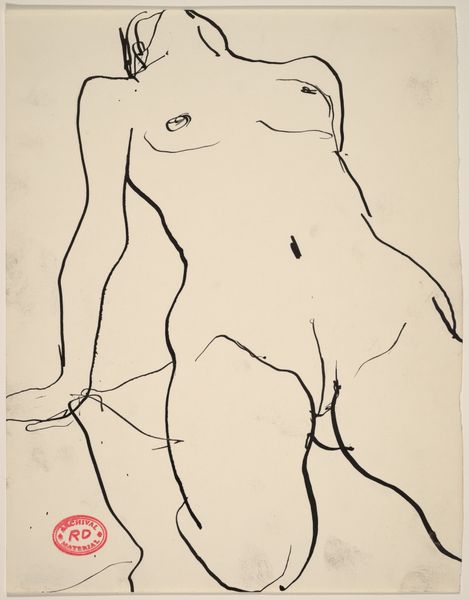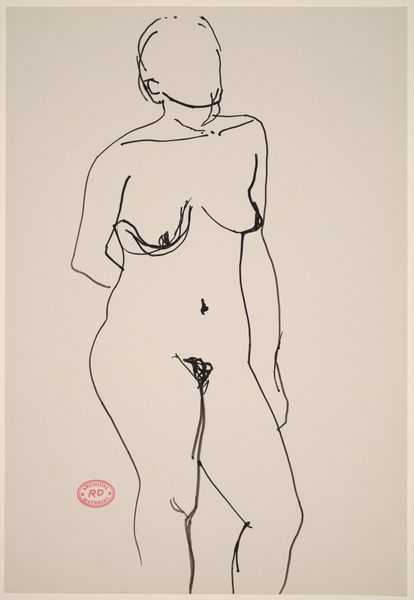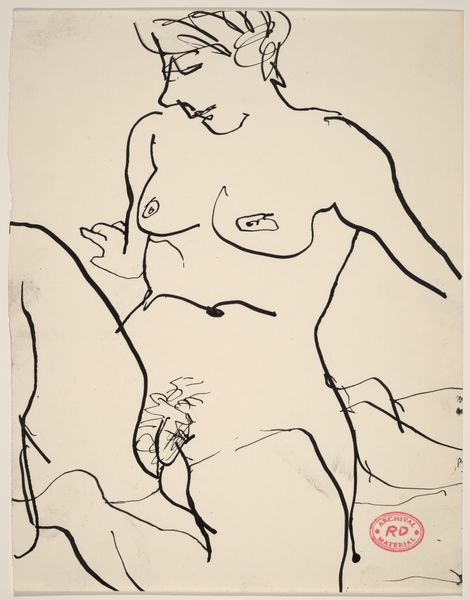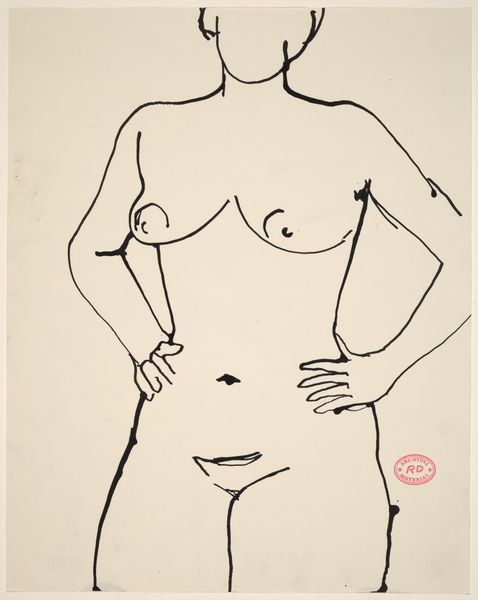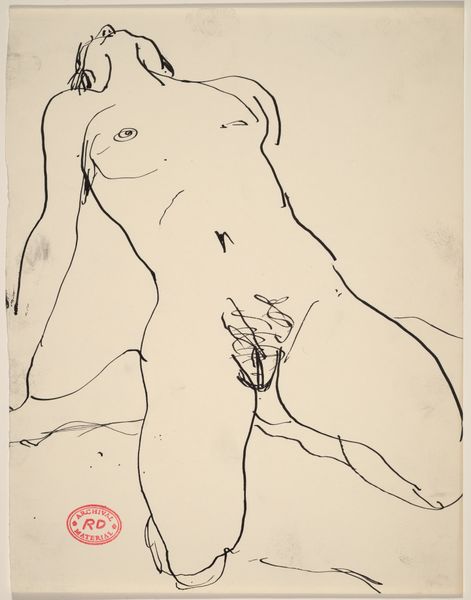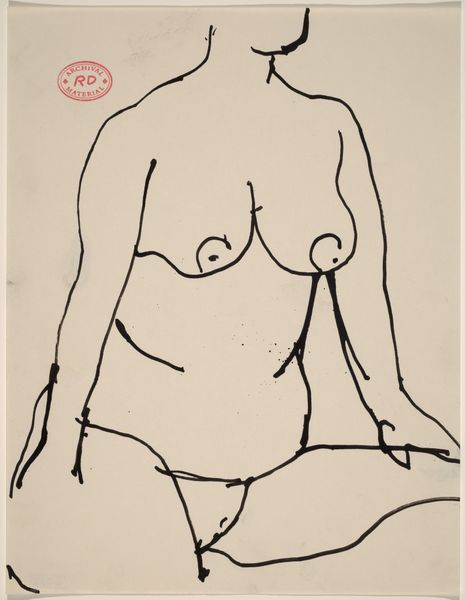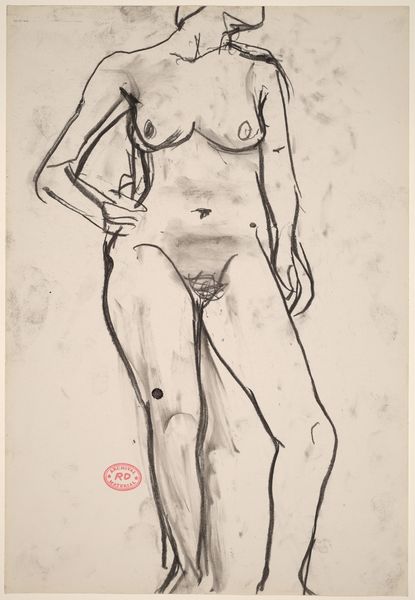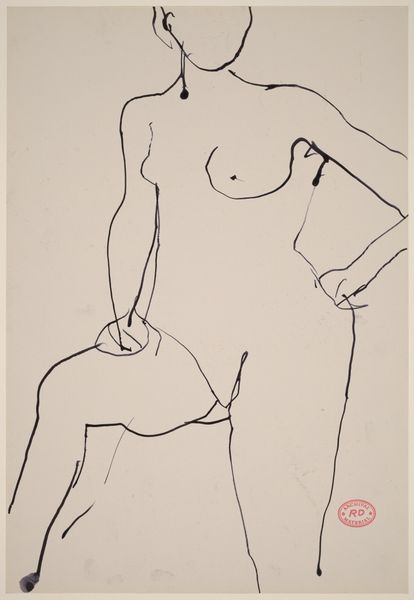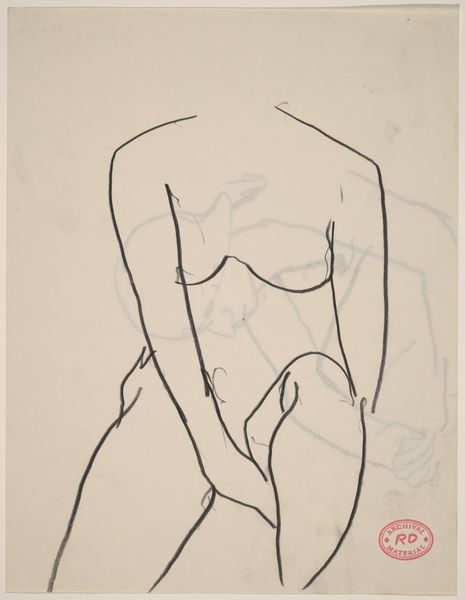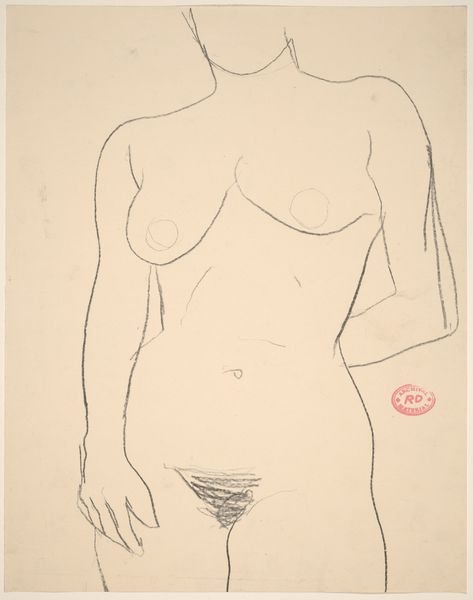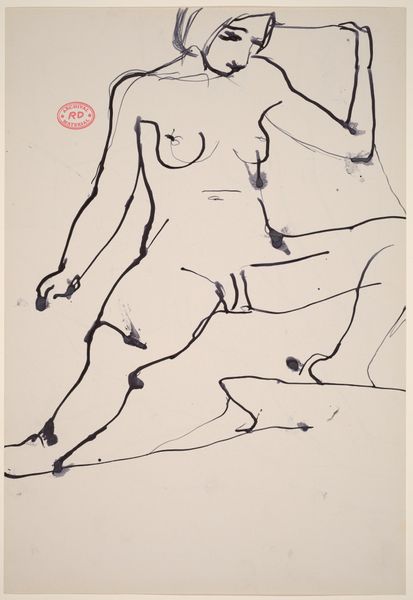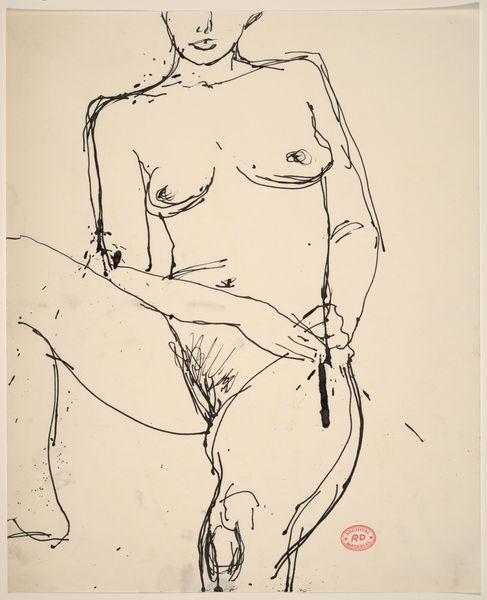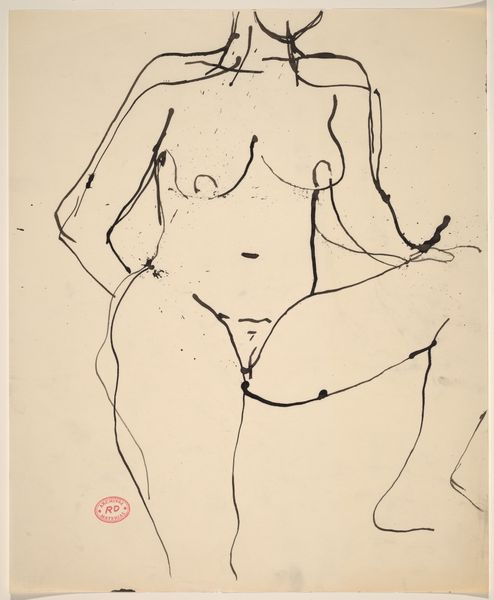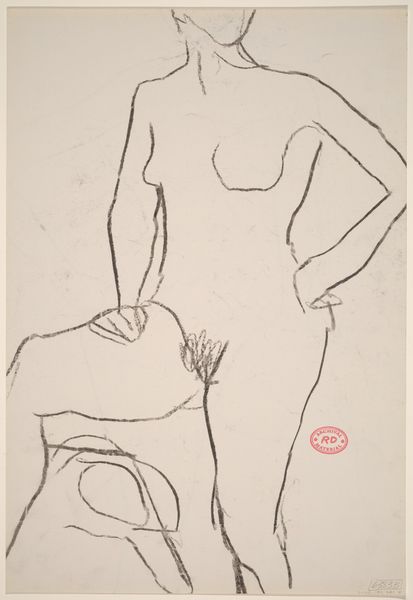![Untitled [standing female nude with arms raised] by Richard Diebenkorn](/_next/image?url=https%3A%2F%2Fd2w8kbdekdi1gv.cloudfront.net%2FeyJidWNrZXQiOiAiYXJ0ZXJhLWltYWdlcy1idWNrZXQiLCAia2V5IjogImFydHdvcmtzL2I2ZDcyM2I1LTZlZTAtNGIwOS05YmJjLWQ1NDI1MzJjNTllZC9iNmQ3MjNiNS02ZWUwLTRiMDktOWJiYy1kNTQyNTMyYzU5ZWRfZnVsbC5qcGciLCAiZWRpdHMiOiB7InJlc2l6ZSI6IHsid2lkdGgiOiAxOTIwLCAiaGVpZ2h0IjogMTkyMCwgImZpdCI6ICJpbnNpZGUifX19&w=3840&q=75)
Untitled [standing female nude with arms raised] 1955 - 1967
0:00
0:00
drawing, ink
#
drawing
#
ink drawing
#
figuration
#
bay-area-figurative-movement
#
ink
#
line
#
nude
Dimensions: overall: 43.2 x 31.8 cm (17 x 12 1/2 in.)
Copyright: National Gallery of Art: CC0 1.0
Editor: This is Richard Diebenkorn's "Untitled [standing female nude with arms raised]," an ink drawing from between 1955 and 1967. It feels both immediate and unfinished to me. I'm struck by how raw and vulnerable the figure seems. What's your take on this, considering its historical context? Curator: Well, consider the prevailing artistic climate of the mid-20th century. The figure, especially the nude, carried a heavy weight of art historical baggage, often loaded with gendered power dynamics. Diebenkorn, moving between abstraction and figuration, seems to be actively negotiating this loaded subject. This line work avoids idealization; there is a certain frankness to the depiction. It seems to engage in a wider conversation around representation in post-war art. Do you see that challenging of convention? Editor: Yes, definitely. It’s not trying to be beautiful in a conventional way. It's less about the perfect form and more about capturing a specific, almost fleeting moment. It's as if we are observing a rehearsal. So is this drawing considered as a response against academic art styles? Curator: In many ways, yes. The loose lines, the visible "errors" – they reject the polished perfection valued by the Academy. But, crucially, they're not merely rejecting it, they’re repositioning the figure within a changed social landscape. We see similar approaches in contemporary works, where the body is a site of personal and political expression, rather than just aesthetic form. Would you agree? Editor: Absolutely. Seeing it that way opens up the reading so much. I'd initially approached it as simply a life study, but thinking about it in the context of its time period, its like Diebenkorn using it to challenge the way female form is typically shown in art. Curator: Precisely! That's the crucial move – seeing art as more than isolated aesthetic objects, and recognizing it as products *of* culture, responding to, and shaping, the society around them. Editor: That definitely gives me a richer understanding of this particular work. Thank you for making it so clear. Curator: My pleasure. It is about acknowledging that art has social agency.
Comments
No comments
Be the first to comment and join the conversation on the ultimate creative platform.
